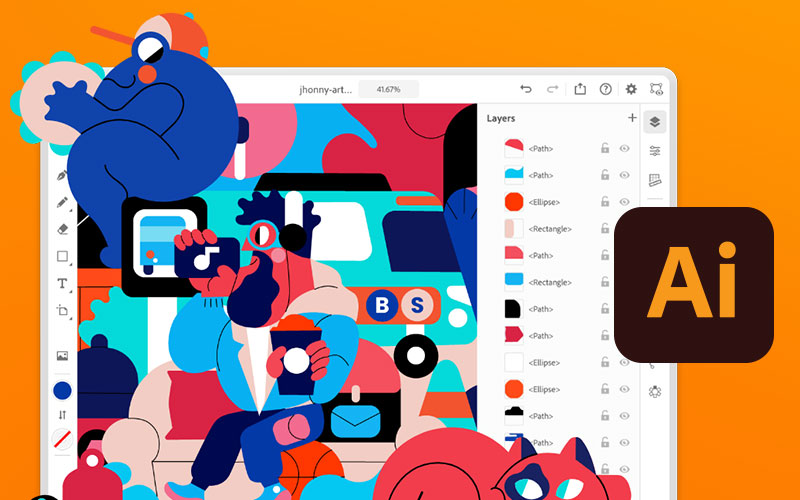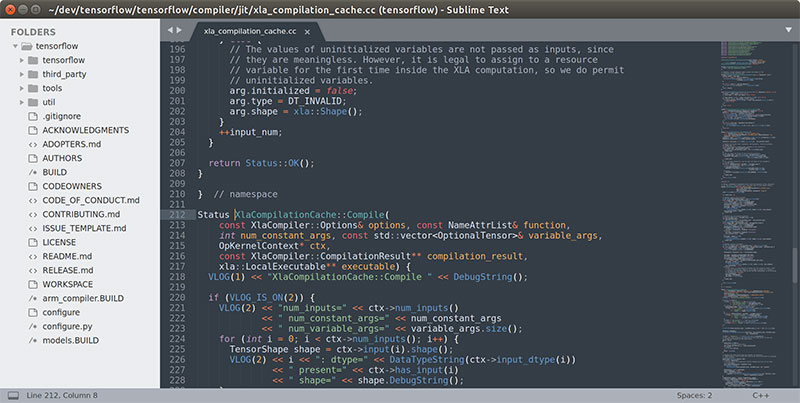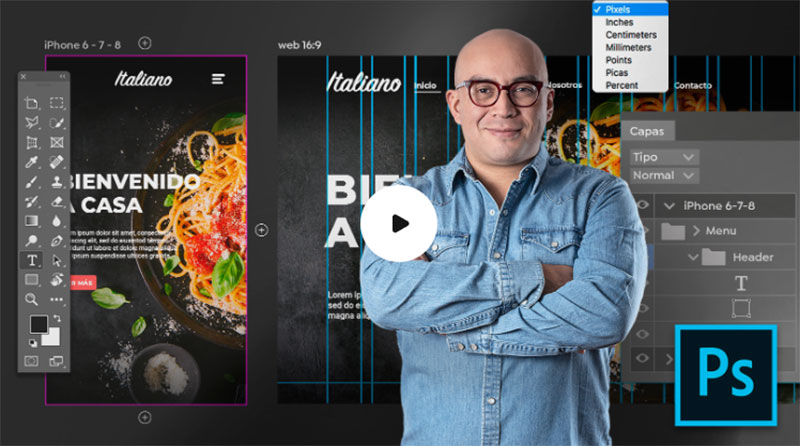

Your Step-by-Step Guide on How to Become a Web Designer
source link: https://www.designyourway.net/blog/how-to-become-a-web-designer/
Go to the source link to view the article. You can view the picture content, updated content and better typesetting reading experience. If the link is broken, please click the button below to view the snapshot at that time.
Your Step-by-Step Guide on How to Become a Web Designer
You want the real dirt on how to become a web designer? Grab a seat, pal, and let’s dive right in. But, like, not too deep, ‘cause this is just the intro.
See, in this wild digital world, web designing isn’t just about slapping some colors on a page. Nah. It’s like crafting that perfect Instagram feed. But, y’know, for businesses and stuff.
- First, it’s about vibes. We’re talkin’ moods, feelings, the whole shebang.
- Then, you gotta learn to speak “computer.” A dash of HTML here, a sprinkle of CSS there. Maybe throw in a little JavaScript for some extra pizzazz.
- And lastly, it’s the whole ‘understanding people’ gig. ‘Cause what’s a gorgeous site if no one gets it?
Understanding Web Design
What is Web Design?
So, what’s web design, you ask? At its core, it’s about crafting the visual and interactive components of websites. Everything you see, touch, or interact with on a webpage, from buttons to banners, fonts to forms, colors to carousels, is a product of web design.
It’s like being the architect of a digital house, deciding how everything should look and where everything should go. But unlike a real house, a website is never really done. It grows, changes, and evolves. And as a web designer, you’re right there, making those changes happen.
The Role of a Web Designer
A web designer’s role isn’t just about creating pretty pages. It’s about understanding the client’s vision, the user’s needs, and finding a sweet spot where both meet. It’s about translating ideas into visuals, messages into mediums.
As a web designer, you play a crucial role in how people experience the web. Your choices decide whether a user stays on a website or leaves, whether they find what they’re looking for or get lost.
And while it can be a lot of pressure, trust me, it’s also a lot of fun. When you see your designs live, helping businesses thrive and users navigate with ease, it’s a feeling like no other.
The Difference Between Web Design and Web Development

Alright, so before we dive deeper, let’s clear up a common confusion: web design and web development are not the same thing.
Web design is about the look and feel of a website. It’s about visuals, user interface, and user experience. It’s where creativity meets technology.
On the other hand, web development is about making the design functional. It’s about coding, creating, and managing the technical infrastructure of a website. Developers make sure that the beautiful website you designed actually works.
Think of it like this: if a website is a car, web designers are the ones designing the shape, colors, and interiors. Developers, meanwhile, are the ones making sure the engine runs smoothly and the brakes work fine.
Learning Web Design Theory
Importance of User Experience (UX)
If there’s one thing you should know about web design, it’s that User Experience is king. It’s all about how a user feels when they interact with a website. Are they confused or do they know exactly where to go? Are they frustrated or are they enjoying the journey?
A well-designed website makes the user’s journey easy, enjoyable, and efficient. It’s not just about how a website looks, but how it works, how it feels.
UX isn’t a one-size-fits-all thing. It changes with the user, the website, the purpose. But at its heart, it’s about empathy, about putting yourself in the user’s shoes and designing for their needs, not just your own.
Get 300+ freebies in your inbox!
Subscribe to our newsletter and receive 300+ design resources in your first 5 minutes as a subscriber.
Understanding User Interface (UI)

Now, where UX is about the overall experience, User Interface (UI) is about the specific elements that people interact with. It’s about buttons, forms, sliders, navigation – the nuts and bolts of a website.
A good UI is intuitive, predictable, and easy to navigate. It makes a user feel at home, even if it’s their first time on the website.
Remember, while a good UI may go unnoticed, a bad one can turn a user away in seconds. So, when you’re designing, pay attention to the details. They matter, a lot.
Principles of Visual Hierarchy

One of the most important concepts you’ll learn on your path to becoming a web designer is visual hierarchy. It’s about arranging elements in a way that guides the user’s attention.
The human eye isn’t a fair player. It’s attracted to certain shapes, colors, and patterns more than others. And as a designer, you can use this to guide the user, to highlight what’s important and downplay what’s not.
Whether it’s making a call-to-action stand out or a navigation menu subtle, visual hierarchy is your key to guiding a user through your design.
Color Theory in Web Design
And of course, there’s color theory. Colors are like spices. Use them right, and you can create something delicious. Use them wrong, and you can leave a bad taste.
Colors convey emotions, set the mood, and communicate your brand’s identity. They can make a website feel vibrant or calm, serious or playful, modern or traditional.
Understanding color theory means knowing how different colors interact, influence each other, and affect the viewer. It’s a crucial part of becoming a web designer, something you’ll use in every project you tackle.
That’s the basics. But remember, becoming a web designer isn’t just about understanding theories. It’s about acquiring skills, about getting your hands dirty and your designs out there. And we’ll get to that next.
Acquiring Essential Skills
Learning to Code
One of the first things you’ll need to get started on your journey to becoming a web designer is learning to code. Don’t worry, it’s not as scary as it sounds. Here are the basics you’ll need to start with:
HTML
HTML is like the skeleton of a website. It gives structure to your content, dividing it into headers, paragraphs, links, images, and more.
CSS
If HTML is the skeleton, CSS is the skin. It’s what makes a website look good, defining the layout, colors, fonts, and other visual elements.
JavaScript
And finally, JavaScript is the muscle. It’s what makes a website interactive, controlling things like forms, animations, and dynamic content.
Graphic Design Skills
Being a web designer isn’t just about code, it’s also about visuals. And for that, you’ll need some graphic design skills.
You’ll need to understand the principles of design like balance, contrast, and alignment. You’ll also need to know how to work with images, create custom graphics, and choose the right typography.
Prototyping and Wireframing
Prototyping and wireframing are like the blueprints for a website. They help you visualize your design, plan your layout, and test your ideas before you start coding.
A wireframe is a rough sketch of your website, showing where each element will go. A prototype is a more detailed version, showing how the website will work and look.
Understanding SEO Basics
And let’s not forget about SEO. SEO, or Search Engine Optimization, is about making your website easy to find on search engines like Google.
It’s about choosing the right keywords, using them correctly, and making sure your website is user-friendly and accessible.
Utilizing Web Design Tools
Knowing the theory and the skills is one thing, but you’ll also need the right tools to put it all into practice. Here are some essentials to get you started:
Design Tools
Adobe Photoshop
Photoshop is still used for web design. Here’s a course by Arturo Servín to teach you how to get better at designing websites in Photoshop.
Adobe Photoshop is a powerhouse for image editing and graphic design. Whether you need to edit photos, create custom graphics, or design a complete website, Photoshop can do it all.
But it can also help you create amazing websites.
Adobe Illustrator

Adobe Illustrator is all about vector graphics. It’s perfect for creating logos, icons, and other scalable graphics that look crisp and clean at any size.
Prototyping Tools
Figma

Figma is another prototyping tool, but it’s also great for collaboration. You can work on designs together in real time, share them with others, and get instant feedback.
Coding Tools
Sublime

Sublime Text is a popular code editor that’s loved for its speed and flexibility. It has a ton of features that make coding easier and more efficient. There are other IDEs.
Content Management Systems (CMS)
WordPress
WordPress is one of the most popular CMS out there. It’s great for blogs, business websites, online stores, and more.
And the best part?
You don’t need to know a lot of code to use it.
Joomla
Joomla is another powerful CMS. It’s a bit more complex than WordPress, but it’s also more flexible.
It’s great for custom websites and complex projects.
Drupal
And finally, there’s Drupal. It’s known for its security and scalability, making it a favorite among large businesses and government organizations.
Building a Portfolio
Alright, so you’ve learned the skills and got the tools. Now it’s time to show off your work.
That’s where a portfolio comes in.
A portfolio is like your calling card as a web designer. It’s where you showcase your best work, share your design process, and let potential clients or employers see what you’re capable of.
What to Include in a Portfolio

So, what should you include in your portfolio? Well, start with your best work. Choose projects that show a range of skills and styles. Include personal projects, client work, or even redesigns of existing websites.
But don’t just show the final product, show the process too. Share your sketches, wireframes, and prototypes. Talk about the challenges you faced and how you overcame them. Show how you think, not just what you create.
Creating Your Own Website
And what better way to show your web design skills than by designing your own website? It’s a great way to put everything you’ve learned into practice and create a platform for your work.
Showcasing Your Work
Once your portfolio is ready, it’s time to showcase your work. Share it on social media, join design communities, enter design competitions. Get your work out there and let the world see what you can do.
Entering the Job Market
Freelancing vs. In-house Jobs

One of the great things about being a web designer is the flexibility. You can work as a freelancer, setting your own schedule and choosing your own clients.
Or you can work in-house for a company, being part of a team and working on consistent projects.
Selling Your Work on Marketplaces
Another option is to sell your work on marketplaces. There are tons of online platforms where you can sell themes, templates, graphics, and more.
It’s a great way to earn passive income and reach a global audience.
Searching for Web Design Jobs
And of course, there’s always the traditional job market. Look for job postings online, attend networking events, reach out to companies directly.
There’s a ton of demand for web designers, so don’t be afraid to put yourself out there.
Continuous Learning and Improvement
Keeping Up with Web Design Trends
Web design is a fast-paced field. What’s trendy today might be outdated tomorrow.
That’s why it’s important to stay on top of the latest trends and technologies. Follow design blogs, attend webinars, join design communities.
Joining Web Design Communities
Speaking of communities, they’re a great way to learn, share, and grow.
You can get feedback on your work, learn from others, and stay connected with the design world. There are tons of online forums, social media groups, and professional networks you can join.
I’ve been spending lots of time on /r/web_design, but you can check out what suits you better for growth.
Seeking Critiques and Iterating Designs
As a designer, it’s important to seek critique and constantly iterate your designs.
It’s how you improve, how you learn, how you grow. Don’t be afraid of criticism. Use it as a tool to become a better designer.
Improving Communication Skills
And let’s not forget about communication. Being a web designer isn’t just about designing, it’s also about communicating.
Whether it’s talking to clients, collaborating with a team, or presenting your work, good communication skills are crucial.
FAQ About Becoming A Web Designer
What skills do I need to become a web designer?
Well, there are a couple of essential skills for this job. HTML and CSS are a must, they’re like the bread and butter of web designing. Graphic design ability is also crucial because aesthetics matter.
Having knowledge of JavaScript is a huge plus. And don’t forget about SEO basics. Learning some user experience (UX) and user interface (UI) design wouldn’t hurt either. It’s all about blending creativity with technical knowledge.
Do I need a degree to become a web designer?
Technically no, you don’t need a degree. But having one in a related field can definitely help. That being said, there are countless successful web designers who learned everything online, from courses, tutorials, or just plain ol’ trial and error.
So, the lack of a formal degree is not a deal-breaker here. It’s your skills and portfolio that really matter.
What tools should I use as a web designer?
Oh boy, there are so many! Adobe Photoshop and Illustrator are classics for design and graphics work. Sketch is also widely used.
For coding, Sublime Text and Notepad++ are great text editors. Then there’s WordPress for content management. And tools like Slack for communication. I’d say explore them all and stick with what works for you.
How much can I expect to earn as a web designer?
Salaries can vary a lot depending on where you live and your experience. According to Payscale, the average web designer in the US makes around $54,000 per year.
But remember, as a freelance web designer, your income can greatly vary depending on how many clients you have and the rates you charge.
How do I create a web design portfolio?
Your portfolio is essentially your selling point. It should showcase your best work. Start by designing some personal projects, or even offer to design for friends or local businesses for free or at a discounted rate.
Remember to include a variety of work that showcases your range of skills. As you gain more experience and projects, continue updating it.
Do I need to know how to code as a web designer?
Well, yes and no. It depends on the job, really. Some web designers are also web developers who write code.
But many web designers primarily focus on the look and feel of the site, and might use a WYSIWYG editor. Knowing how to code can definitely give you an edge though.
How can I find clients as a web designer?
Networking, networking, networking! Attend industry meetups, join online communities, and leverage social media. You can also try freelancing platforms like Upwork or Freelancer.
Make sure you have an impressive portfolio to showcase your skills. Word-of-mouth referrals can also be incredibly powerful.
What’s the difference between a web designer and a web developer?
Think of it this way – a web designer is like an architect, while a web developer is more like the construction worker.
Designers are responsible for the look and feel of the site, while developers build the functionality of the site. There can be overlap between the two, but they do have distinct roles.
What’s the future of web design?
Ah, crystal ball question. From what I see, things like mobile-first design, AI, and virtual reality are changing the game.
Web design is becoming more sophisticated and user-focused. It’s a field that never stands still, so as a web designer, you’ve gotta be up for continuous learning!
How long does it take to become a web designer?
It’s not a one-size-fits-all answer. Some folks might pick up the basics in a few months, while others may take longer. If you’re dedicated and put in the hours, you could potentially start taking on small projects within a year.
But remember, like in many fields, becoming really good takes time, practice, and real-world experience.
Conclusion on How To Become A Web Designer
So, that’s it. That’s the journey to becoming a web designer. It’s not always easy, but it’s definitely rewarding. From learning the basics of coding and design, to building a portfolio and entering the job market, it’s a journey full of learning, creativity, and growth.
And to all the aspiring web designers out there, remember, it’s not about where you start, it’s about where you’re going. So don’t be afraid to start. Take that first step, dive in, and let the journey begin.
Recommend
About Joyk
Aggregate valuable and interesting links.
Joyk means Joy of geeK
